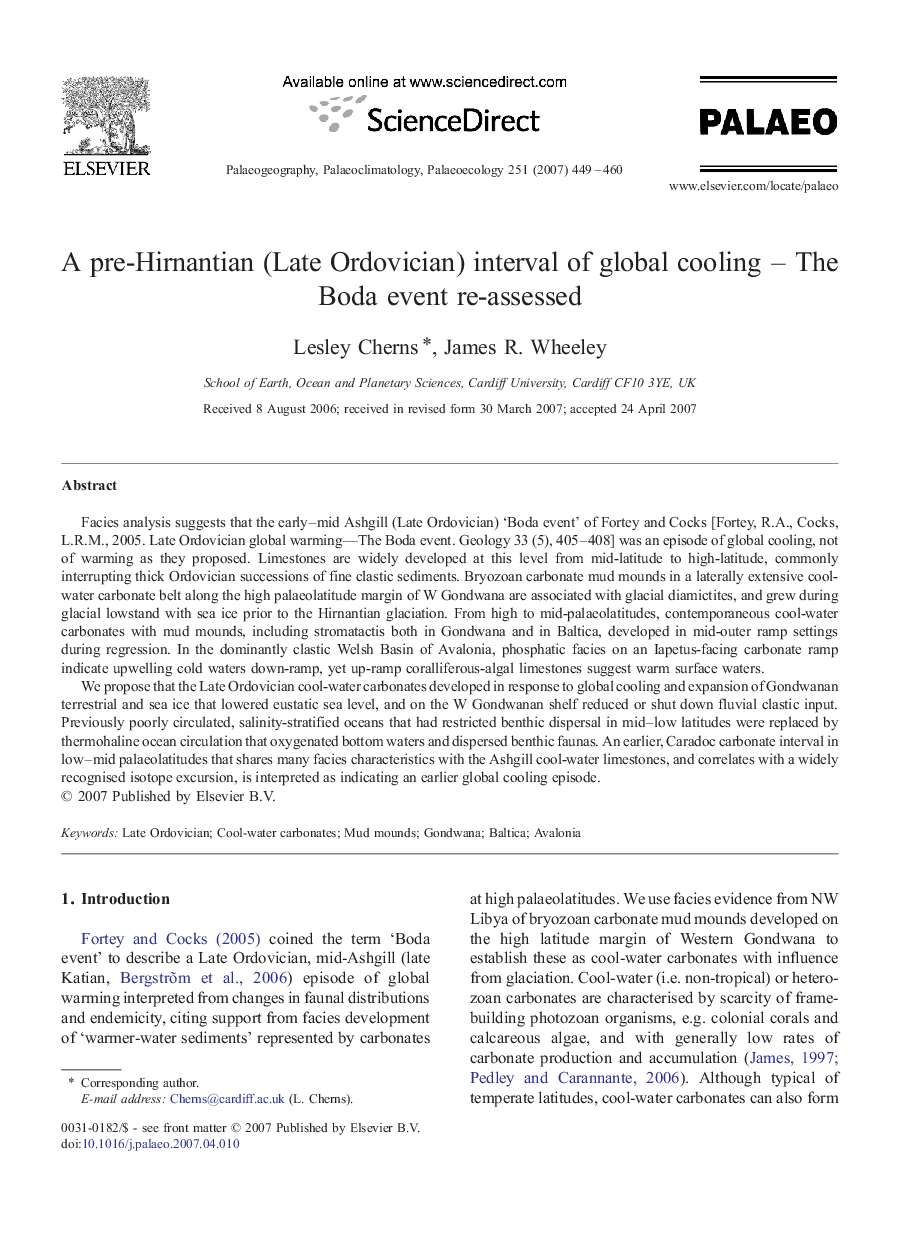| کد مقاله | کد نشریه | سال انتشار | مقاله انگلیسی | نسخه تمام متن |
|---|---|---|---|---|
| 4468894 | 1622348 | 2007 | 12 صفحه PDF | دانلود رایگان |

Facies analysis suggests that the early–mid Ashgill (Late Ordovician) ‘Boda event’ of Fortey and Cocks [Fortey, R.A., Cocks, L.R.M., 2005. Late Ordovician global warming—The Boda event. Geology 33 (5), 405–408] was an episode of global cooling, not of warming as they proposed. Limestones are widely developed at this level from mid-latitude to high-latitude, commonly interrupting thick Ordovician successions of fine clastic sediments. Bryozoan carbonate mud mounds in a laterally extensive cool-water carbonate belt along the high palaeolatitude margin of W Gondwana are associated with glacial diamictites, and grew during glacial lowstand with sea ice prior to the Hirnantian glaciation. From high to mid-palaeolatitudes, contemporaneous cool-water carbonates with mud mounds, including stromatactis both in Gondwana and in Baltica, developed in mid-outer ramp settings during regression. In the dominantly clastic Welsh Basin of Avalonia, phosphatic facies on an Iapetus-facing carbonate ramp indicate upwelling cold waters down-ramp, yet up-ramp coralliferous-algal limestones suggest warm surface waters.We propose that the Late Ordovician cool-water carbonates developed in response to global cooling and expansion of Gondwanan terrestrial and sea ice that lowered eustatic sea level, and on the W Gondwanan shelf reduced or shut down fluvial clastic input. Previously poorly circulated, salinity-stratified oceans that had restricted benthic dispersal in mid–low latitudes were replaced by thermohaline ocean circulation that oxygenated bottom waters and dispersed benthic faunas. An earlier, Caradoc carbonate interval in low–mid palaeolatitudes that shares many facies characteristics with the Ashgill cool-water limestones, and correlates with a widely recognised isotope excursion, is interpreted as indicating an earlier global cooling episode.
Journal: Palaeogeography, Palaeoclimatology, Palaeoecology - Volume 251, Issues 3–4, 8 August 2007, Pages 449–460